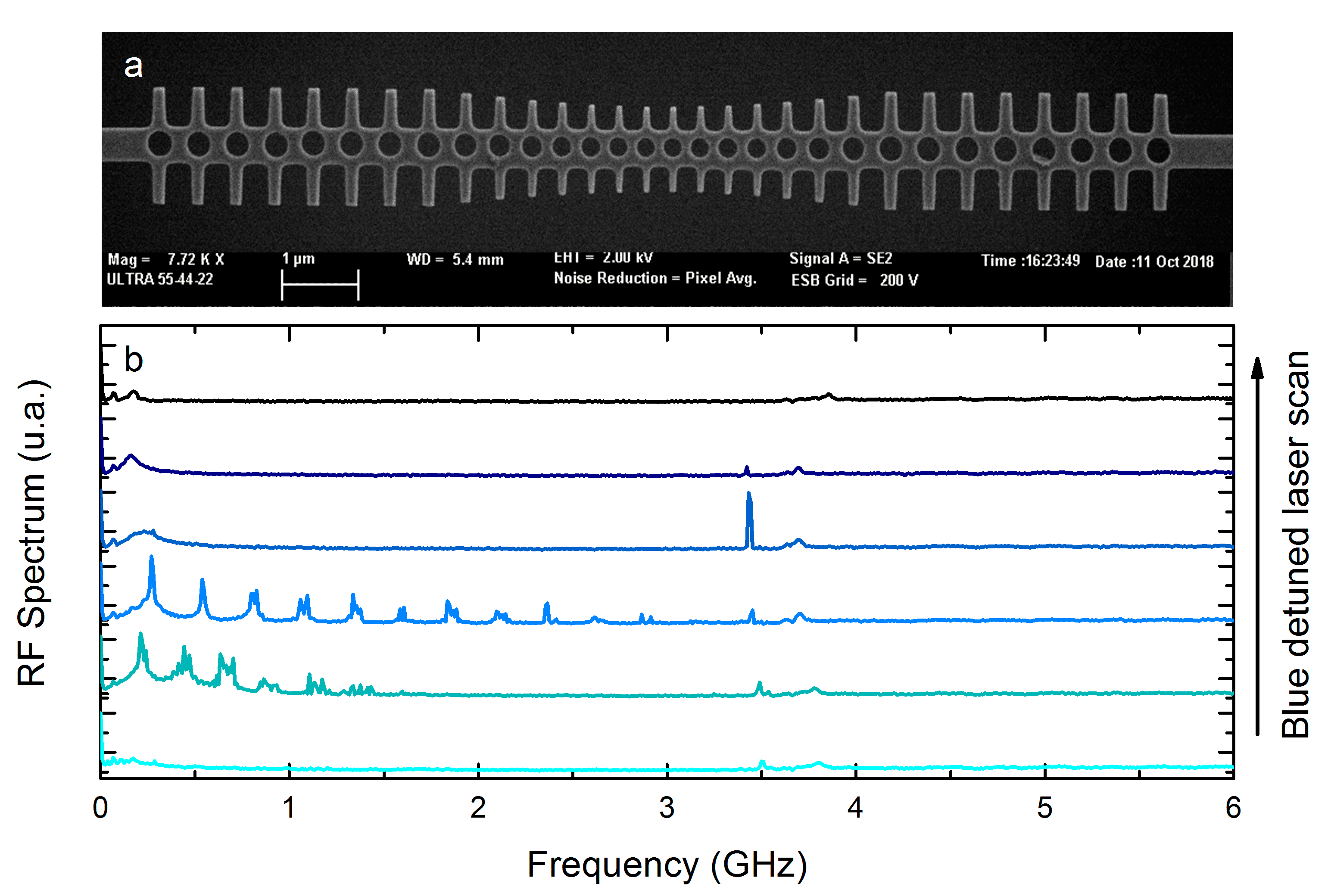
Towards Large Coupling Rate in Optomechanical Crystal Cavities with a Full Phononic Bandgap
Abstract: We present an one-dimensional optomechanical crystal cavities design which has been modified to have a complete phononic bandgap. Here, some optical and mechanical experimental measurements are presented, showing some effects as dynamical backaction.
laumermo@ntc.upv.es
One-dimensional optomechanical (OM) crystals are quasi-periodic structures built on high-index released semiconductor slabs in which propagation and coupling of optical and mechanical waves can be engineered. So, most of the OM crystal cavities designs with high quality factors (Q) and high OM coupling factors (g0), do not have a complete phononic bandgap. This implies that the mechanical resonances lie into a quasi-bandgap, which enables coupling with other modes producing phonon leakage and mechanical losses and leads to an undesired reduction of the mechanical Q factor. In order to avoid this, some authors [1] placed a 2D phononic crystal displaying a full phononic bandgap at the surroundings to reduce the acoustic radiation, although still mechanical waves can propagate out of the defect region reducing the Q factor. In [2], an OM crystal cavity with a full phononic bandgap around 4 GHz was demonstrated but the OM coupling in that region was too weak. Here, we combined those previous cavity designs to get GHz-scale mechanical modes within a phononic bandgap but with a large OM coupling rate (g0 >1MHz) [3].

The resulting cavity is shown on the Scanning Electron Microscope (SEM) image in Fig. 1a. It has been designed through the analysis of the photonic and phononic band diagrams. For the case of the phononic bands we have introduce directly an acoustic shield in the mirror region, this means that the phononic shield is integrated in the beam so the mechanical mode gets completely bounded to the wavelength-size cavity region. We have obtained the first experimental measurements of this silicon new OM crystal cavity design with simultaneously localized and coupled mechanical and optical modes. Optical quality factors of the order of 104 have been found which enable transduction of mechanical modes in the MHz and GHz range, as can be seen in Fig. 1b. Further work will include full characterization of the GHz modes in the phononic bandgap at room T.
[1] J. Chan et al., Appl. Phys. Lett. 101, 081115 (2012).
[2] J. Gomis-Bresco et al., Nat. Commun. 5, 4452 (2014).
[3] M. Oudich et al., Phys. Rev. B. 89, 245122 (2014)

Powered by Eventact EMS